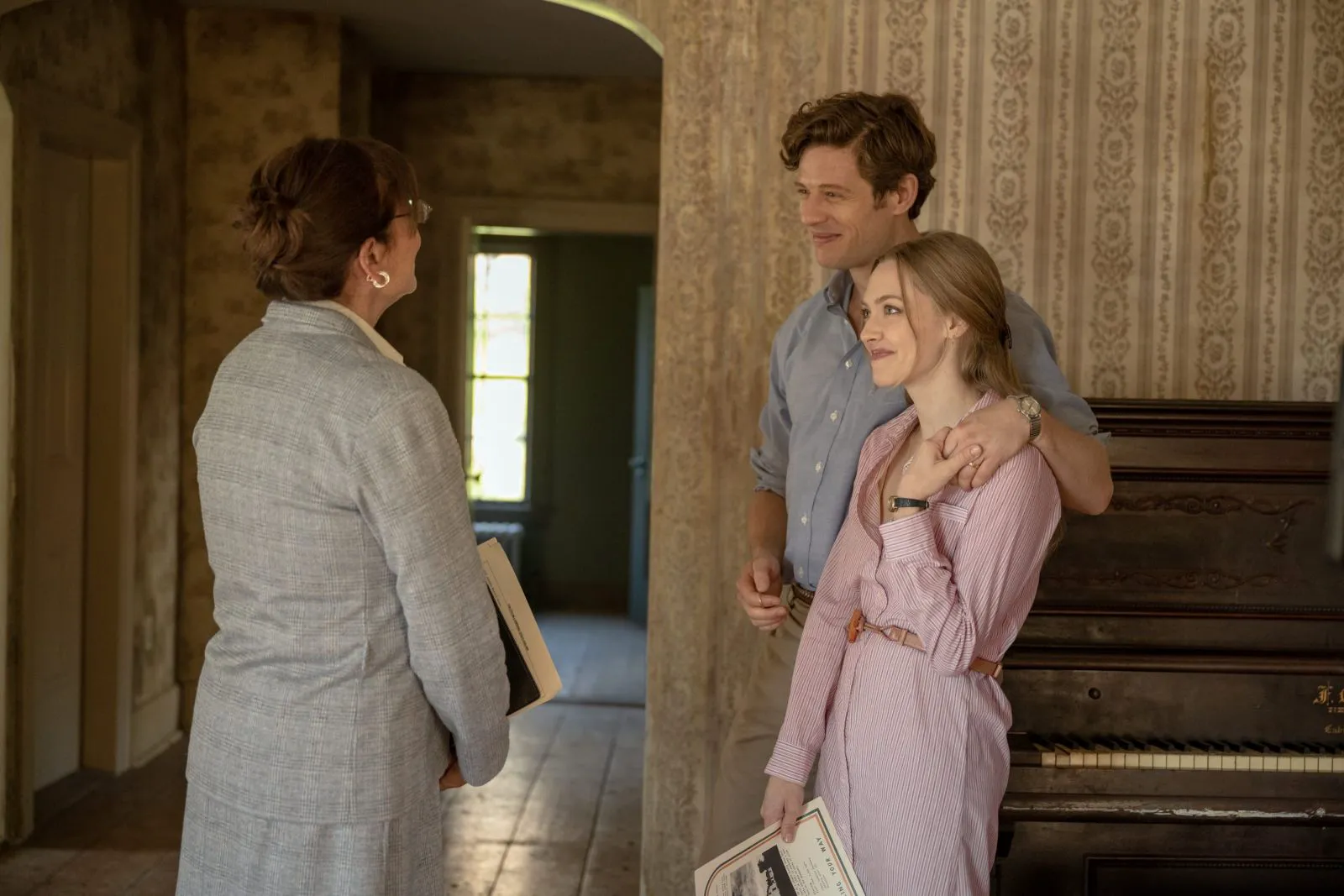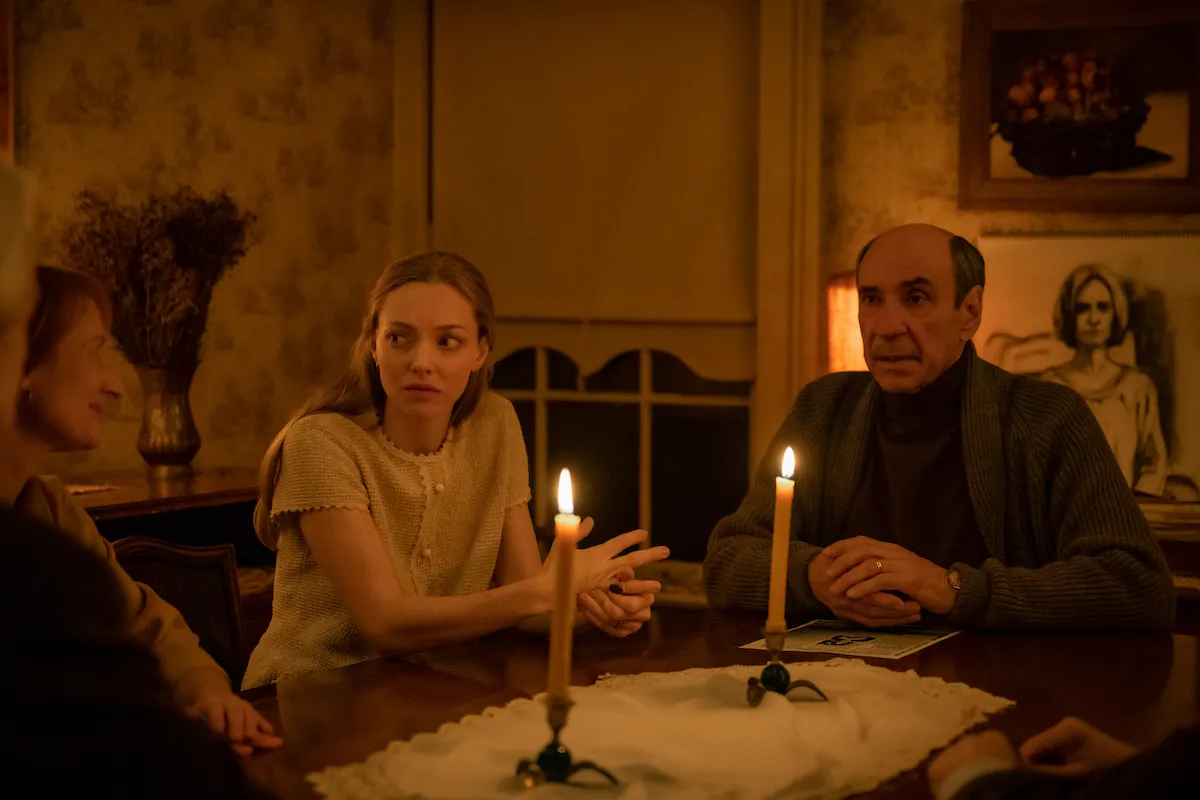When Real Estate Deals Go Wrong: A Look at “Things Heard & Seen”
It all begins, as these stories often do, with a move to a new house. If cinema is to be believed, a conspiracy between real estate agents and restless spirits is an age-old agreement. In “Things Heard & Seen,” the rental contract is signed in the ink of gaslighting. George Claire (James Norton), a professor pleased with his bargain property, decides not to burden his dear wife, Claire (Amanda Seyfried), with the house’s troubled history. After all, swapping the noisy streets of New York for provincial tranquility is stressful enough. George anticipates a semester at a small college, new neighbors, and the accolades of a successful dissertation. Meanwhile, Catherine faces renovations, restorations (armed with an art history degree), their daughter, and a restless presence that howls at night, accompanied by the ominous flickering of lights and other electrical devices.

James Norton as George Claire in a still from “Things Heard & Seen”
James Wan, within his cursed cinematic universe, accurately established a simple rule: ghosts feel at home in the 1970s. Each year, unearthing rotting floorboards and releasing spirits that risk being caught on an iPhone camera becomes increasingly difficult. Filmmakers are almost relieved to rewind time to an era where one might still find a grandfather clock in the hallway. In the case of “Things Heard & Seen,” this escapism is not only insightful but also a nod to Elizabeth Brundage’s source novel: a university community, the waning 70s, a spirit of sisterhood, and the second wave of feminism. Directors and screenwriters Shari Springer Berman and Robert Pulcini, like the creators of many other Netflix projects (where the film was released), prioritize emancipation, leaving the ghosts as a cosmetic and not particularly frightening backdrop to a stifling story of a marriage’s demise.
This story is played out meticulously and in great detail, especially by Seyfried, whose presence can breathe life into even the most lifeless script. She suits the era’s attire and endless suspicions. However, the feminist message lingers somewhere halfway, along with tablecloths floating under the ceilings, and the mechanics of Catherine’s relationship with her husband inevitably devolve from Hitchcockian suspense to less successful examples of the “Amityville Horror” retelling.

Amanda Seyfried as Catherine Claire in a still from “Things Heard & Seen”
Ghosts and Marital Discord
A patient viewer might feel betrayed by the revelation of the plot, but frankly, it’s so flimsy that Professor Claire doesn’t seem to elicit genuine sympathy even from his own mother. It doesn’t take long to guess who the main evil is within these walls, living or dead. Literature and Swedish scientist, mystic, inventor, and theosophist Emanuel Swedenborg come to the aid of the rumbling ghosts. “Things Heard & Seen” opens with a quote attributed to him: “That which is in the heavens is more real than that which is on earth.” But the film’s body doesn’t rush to soar upwards; its ideas and a novel that Catherine stumbles upon are limited to simple truths: not all husbands are good, not all ghosts are bad.
Unresolved Themes and Missed Opportunities
Ultimately, it’s quite difficult to determine what the authors actually wanted to discuss. It’s as if all the themes they touched upon remained on the periphery, leaving the central focus on a one-story town, neighborhood, university society, and professors’ wives, with big secrets behind small doors. Perhaps it is precisely these well-trodden genre tropes (if not clichés), the recognizable stuffiness of the microsociety, that arouse curiosity and the desire to watch the film to the end. Although, perhaps, the agenda is a much more pragmatic and understandable question for Americans: real estate. It seems that even the pandemic could not convince a single New Yorker to sell their apartment in the city and move to a farm. Mrs. Claire should have been more thorough in choosing a real estate agent than in choosing a husband.